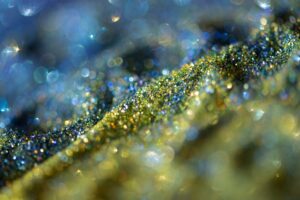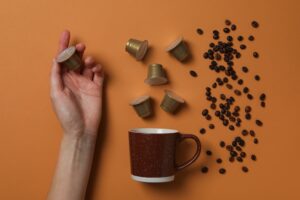Composting is one of the most rewarding steps you can take toward a more sustainable lifestyle. It turns food scraps, yard waste, and natural materials into nutrient-rich compost that revitalizes soil and reduces landfill waste. But there’s a catch—not everything organic belongs in your compost bin.
Adding the wrong materials can invite pests, produce unpleasant odors, spread plant diseases, or ruin the nutrient balance of your compost. In this guide, we’ll walk through what not to compost, why it matters, and how to avoid the most common mistakes people make when trying to create healthy, productive soil.
Why Some Items Should Stay Out of Your Compost
Even natural or biodegradable materials can pose problems in a compost pile. Some:
- Attract pests like rats or raccoons
- Introduce pathogens that survive compost temperatures
- Release toxins into your soil
- Slow down decomposition or upset the moisture balance
Knowing what not to compost is just as important as knowing what to include.
Foods You Shouldn’t Compost
1. Meat, Fish, and Bones
Why avoid it:
These animal products decompose slowly, smell bad, and attract scavengers. They can also harbor harmful bacteria.
Alternative:
If you have a commercial or Bokashi composting system, you may be able to process small amounts.
2. Dairy Products
Why avoid it:
Milk, cheese, butter, and yogurt quickly turn rancid, causing foul odors and pest issues.
Alternative:
Use a food waste service that handles organic animal products if available in your area.
3. Oily or Greasy Foods
Why avoid it:
Fats don’t break down efficiently in home compost and create a slimy texture that can block airflow.
Watch out for:
Salad dressings, fried food scraps, peanut butter, and cooking oils.
4. Processed or Sugary Foods
Why avoid it:
Highly processed snacks or sugary items attract ants and rodents, and often contain preservatives that inhibit compost microbes.
Examples:
Candy, cookies, bread with mold inhibitors.
5. Citrus Peels (in excess)
Why avoid it:
Citrus is acidic and contains natural oils that may slow decomposition or harm earthworms.
Tip:
Small amounts are fine—just chop finely and mix with plenty of browns.
Yard and Garden Waste to Avoid
1. Diseased Plants
Why avoid it:
Some plant pathogens can survive composting if the pile doesn’t reach high enough temperatures.
Tip:
Dispose of infected plants in the trash or a municipal yard waste system.
2. Weeds That Have Gone to Seed
Why avoid it:
Composting weeds with seed heads can reintroduce them to your garden when you spread compost.
Tip:
Only compost weeds early in their growth or after they’ve dried out fully.
3. Chemically Treated Grass or Plants
Why avoid it:
Pesticides and herbicides can remain active in compost and damage sensitive garden plants.
Tip:
Only compost untreated grass and leaves.
4. Invasive Plant Species
Why avoid it:
Some aggressive plants (like kudzu or bindweed) can survive the composting process and spread.
Solution:
Bag and dispose of invasive species through local yard waste programs.
Other Household Items to Keep Out
1. Glossy or Coated Paper
Why avoid it:
Shiny magazines, receipts, and packaging often contain plastics, dyes, or BPA.
Alternative:
Use plain newspaper or uncoated cardboard as your carbon source.
2. Dryer Lint (from synthetic fabrics)
Why avoid it:
Most lint includes microplastics from synthetic clothes like polyester or nylon.
Tip:
If you only dry natural fabrics (cotton, linen, hemp), it’s safe to compost the lint.
3. Pet Waste (from dogs or cats)
Why avoid it:
It may carry harmful pathogens, especially if composting for food gardens.
Exception:
Waste from herbivorous pets (rabbits, hamsters) is compost-safe when mixed with bedding.
4. Vacuum Bag Contents
Why avoid it:
Usually contains synthetic fibers, dust, and possibly chemicals from cleaning products.
Tip:
Stick to clean, natural debris and avoid vacuum dust.
Composting Mistakes That Can Harm Your Soil
Overloading With One Material
- Too much fruit = soggy, smelly compost
- Too much brown = dry, inactive compost
Solution: Maintain a good balance of greens and browns (roughly 1:2 or 1:3).
Letting the Pile Get Too Wet or Too Dry
- Excess moisture causes anaerobic conditions
- Dry piles won’t break down efficiently
Solution: The pile should feel like a wrung-out sponge. Adjust with dry browns or a splash of water.
Not Turning the Pile
Compost needs oxygen. If you let it sit still for too long, decomposition slows and anaerobic bacteria take over.
Solution: Turn your pile weekly, or use a compost tumbler for easy rotation.
Adding Large, Unchopped Items
Whole pumpkins, melons, or long stems can take months to break down.
Solution: Chop large scraps into smaller pieces for faster results.
FAQs: What Not to Compost
Can I compost moldy food?
Yes—mold is part of decomposition. Just avoid moldy meat or dairy.
Are paper towels compostable?
Yes, if they’re plain and free of cleaning chemicals or synthetic grease.
What about eggshells?
Absolutely! Rinse and crush them to add calcium. They decompose slowly but improve soil texture.
Can I compost pet hair or human hair?
Yes—in small amounts. It adds nitrogen and breaks down slowly.
Are biodegradable plastics compostable?
Only if labeled home compostable. Most require industrial composting and won’t break down properly in your bin.
Final Thoughts: Smart Composting Builds Healthy Soil
Composting is more than tossing scraps—it’s about building a living, breathing system that turns waste into nutrient-dense soil. Knowing what not to compost helps avoid harmful mistakes and creates compost that truly nourishes your plants and supports a thriving garden ecosystem.
Stay mindful, stay curious, and remember: when in doubt, leave it out (or research it first!). The best compost piles are balanced, intentional, and full of life.







Reader Interactions